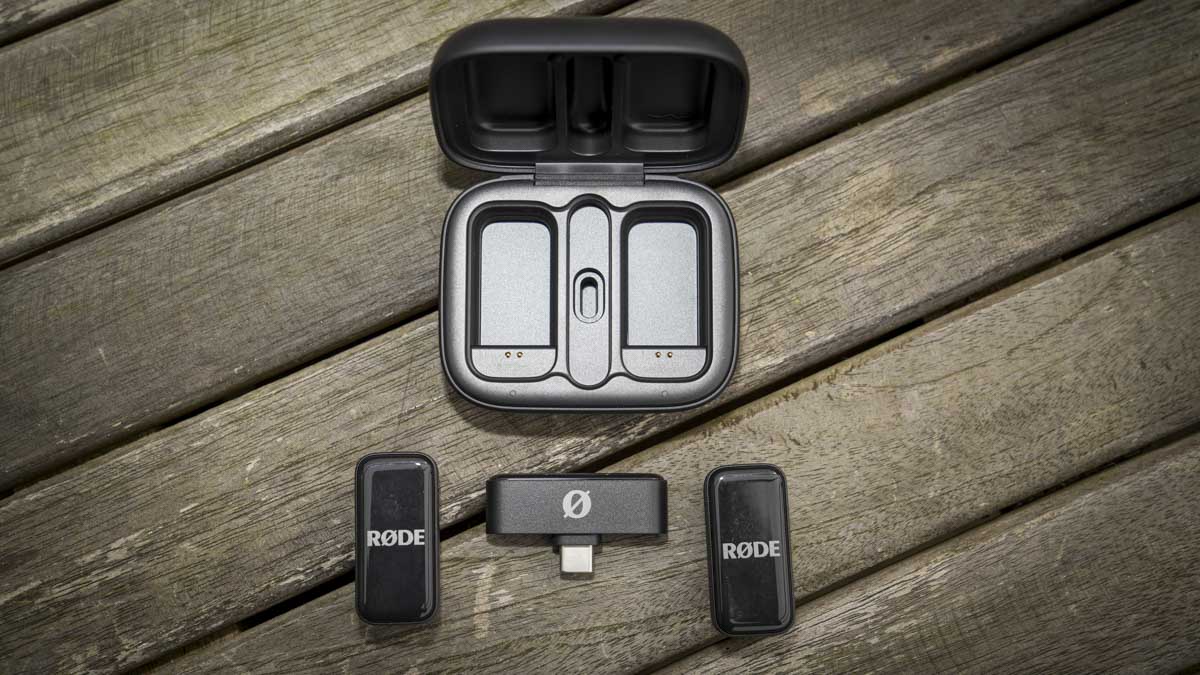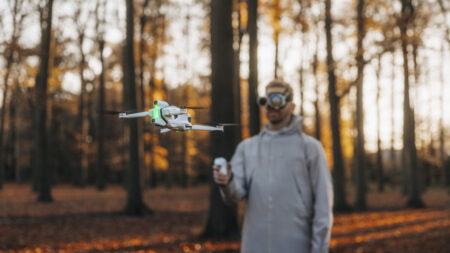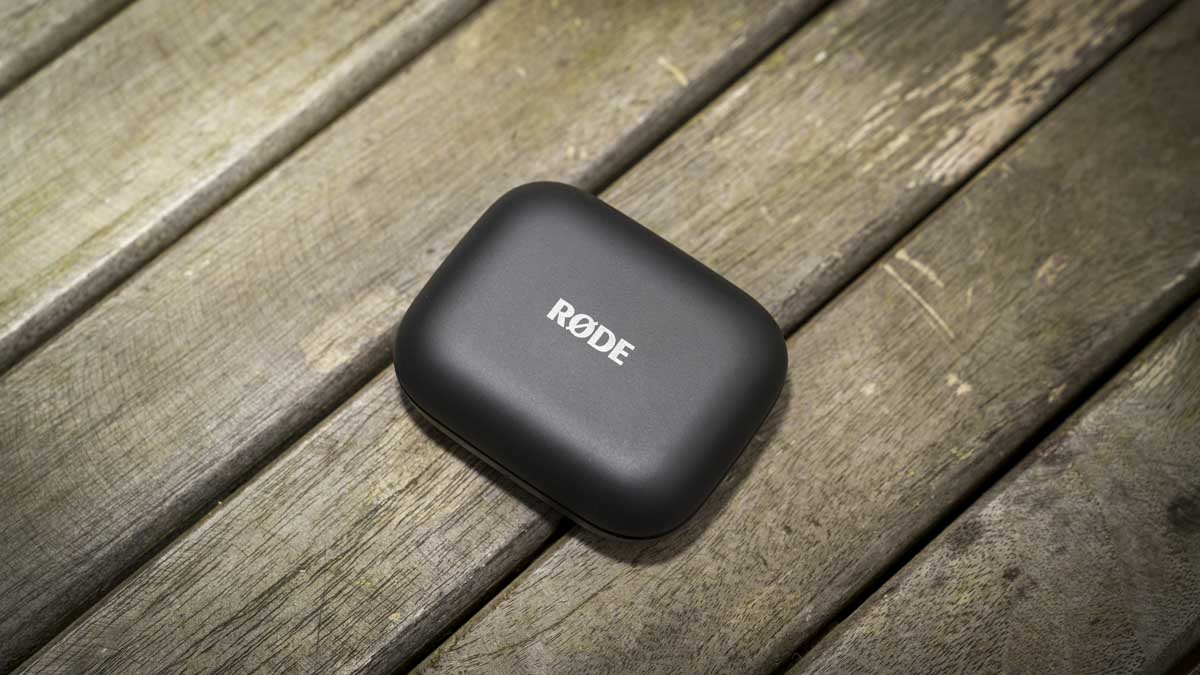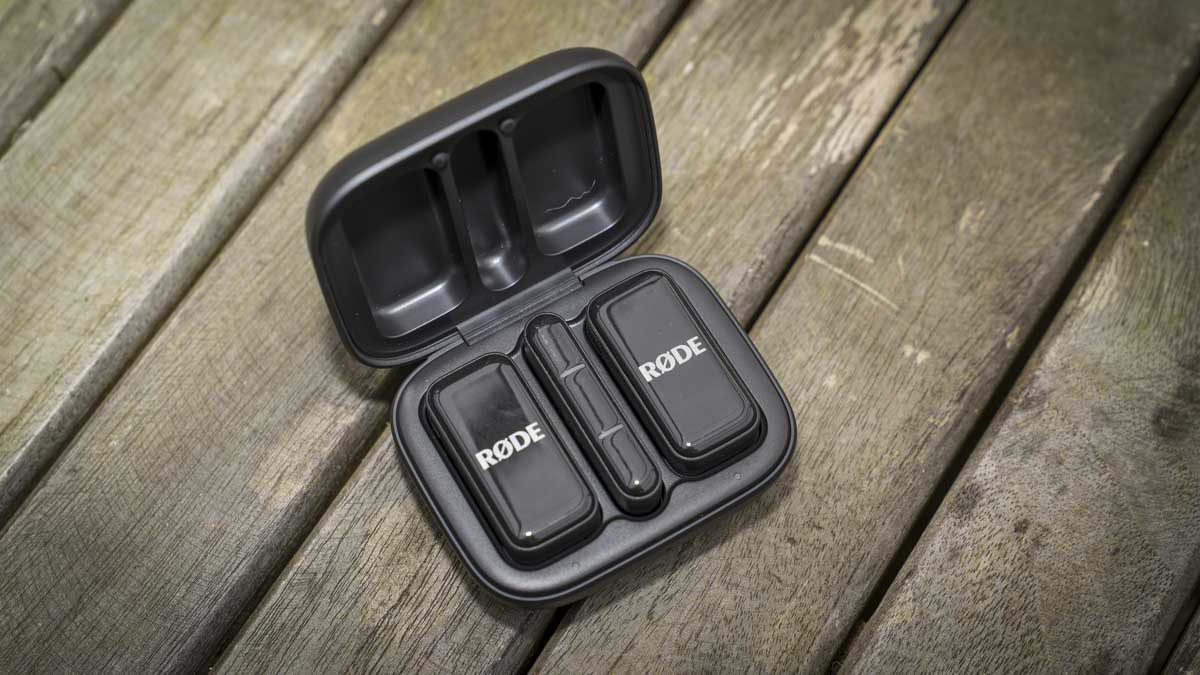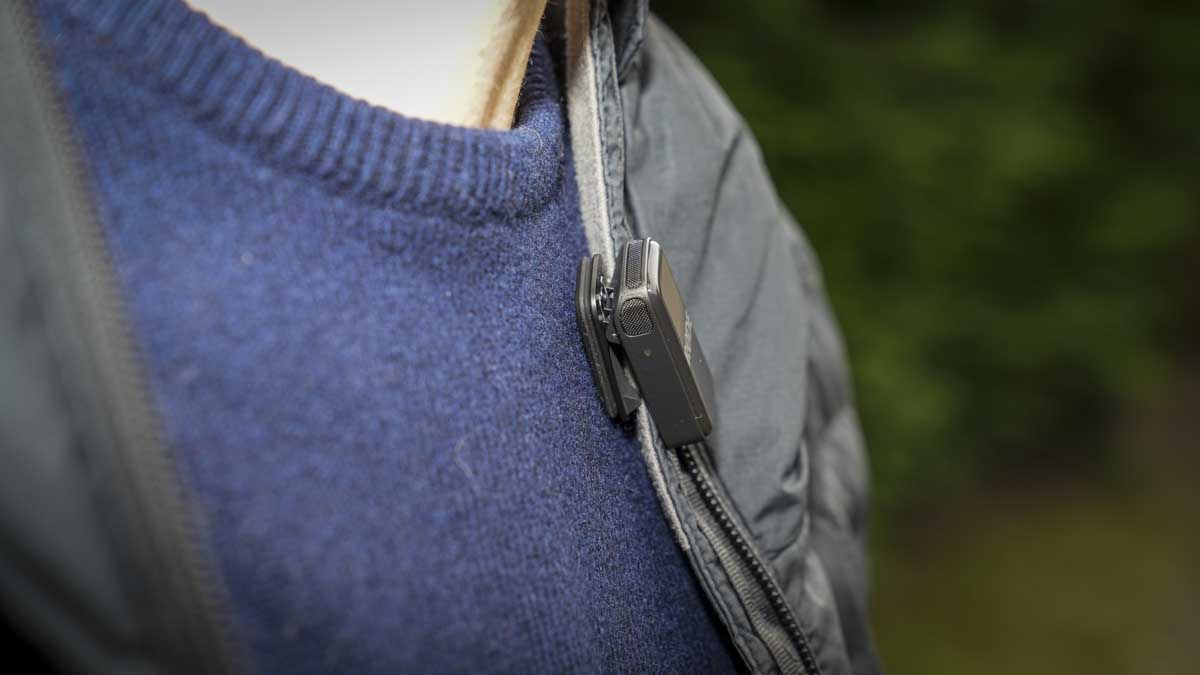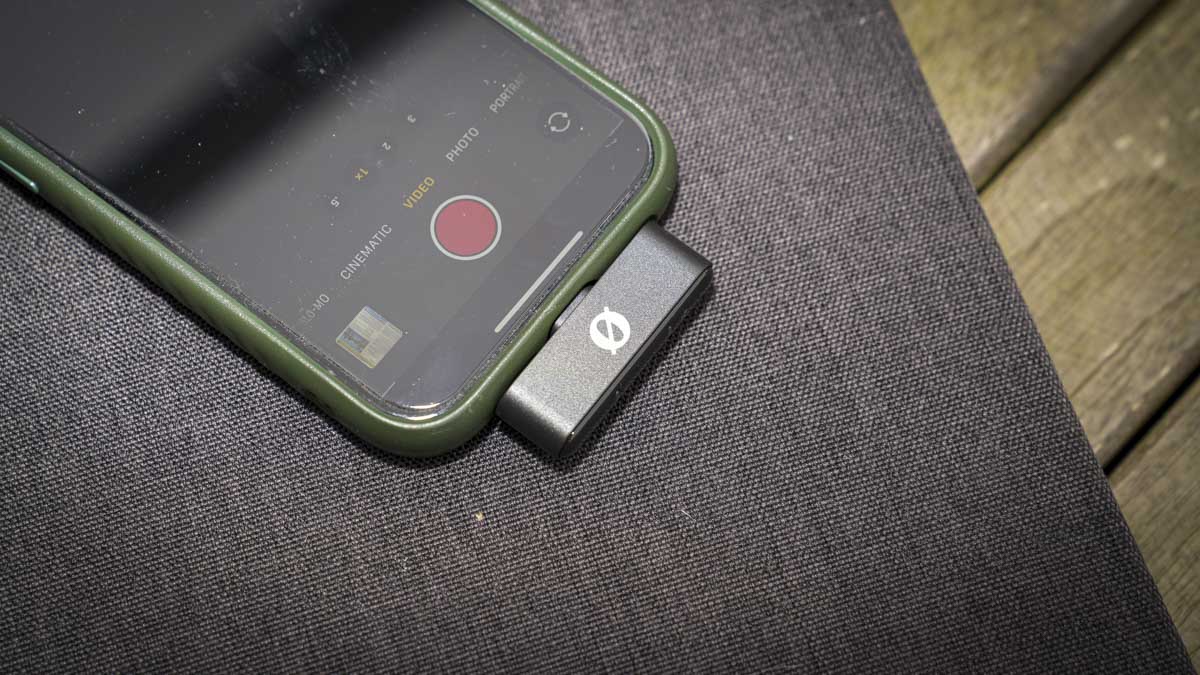Starting out with the setup, it really couldn’t be easier, with the two microphones neatly laid out either side of the small transmitter in the charging case. The case itself charges via a simple USB Type-C connector, which means it can be charged up through your laptop, or you can use a power station or power bank such as the UGREEN, which makes them nice and portable, with no other charging unit or adapters needed.
Once the case is charged, which in turn charges the transmitter microphones, you’re ready to get started. The small receiver that plugs into the base of your smartphone’s charging port draws power from the phone, and as it’s small and lightweight, it doesn’t draw a huge amount, so it won’t drain your smartphone battery in a noticeable way.
Getting started is really easy—just plug the receiver into the base of your smartphone. What RØDE has done here is great, as they have designed the socket in such a way that if your phone has a smartphone case on, it should still fit without the need to remove the case, which is a great feature and something many others forget to do.
Equally, the two transmitting mics are just as easy to use. Once removed from the case, they will automatically pair with the receiver, which is highlighted by small lights. Essentially, once the connection is made, you’re ready to go once the mics are clipped onto yourself or an interviewee.
What’s nice here is that you can use the microphones either individually or as a pair. So, if you’re a content creator working alone, you have one mic, but if you need to interview someone, then you have the second mic ready to go.
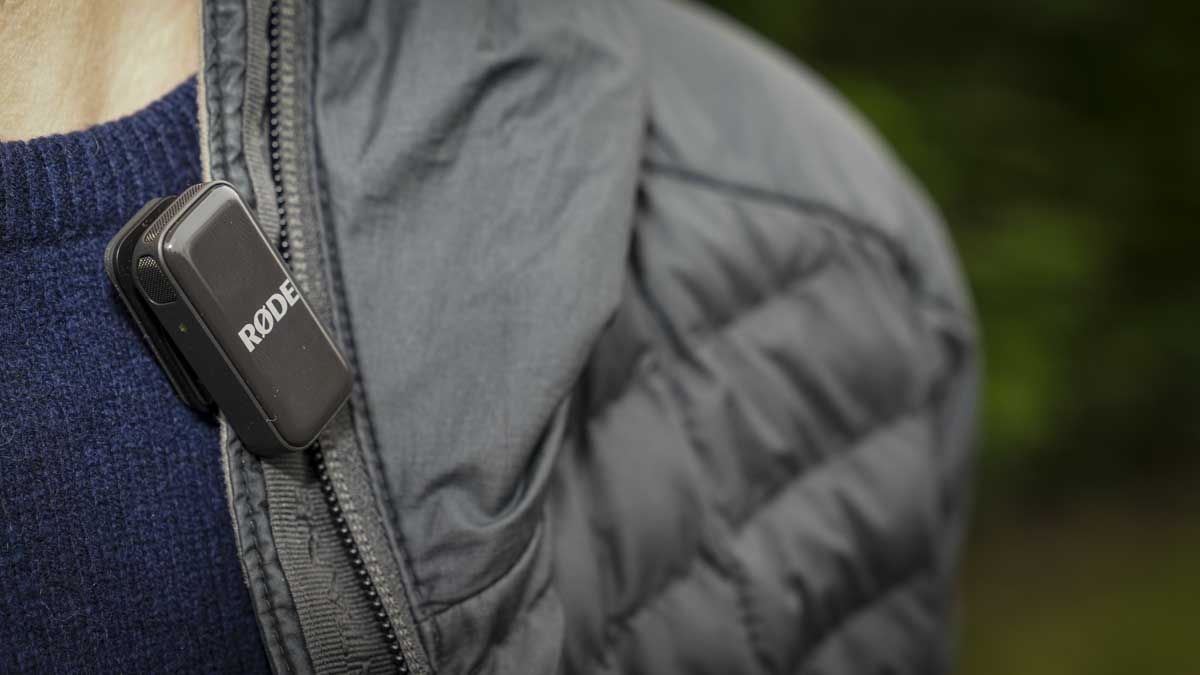
Another useful feature is that you can record in either mono or stereo mode, and this is all accessible through the RØDE Capture app. Although it doesn’t offer much flexibility over recording settings such as levels, it does offer this one extremely important feature.
The RØDE Capture app, while simple, does take things to another level. First and foremost, you have the option to use the wireless microphones straight out of the box, capturing simple video footage with the audio being supplied directly from the wireless micro transmitters. But there’s also a decent amount of adjustment available. If you push the small microphone button, you can go in and adjust the audio levels of the two microphones. So, if one person is louder and the other quieter, you can adjust the levels accordingly to even them out—although the system does a pretty good job of doing that automatically.
Then, to get stereo recording, you have the split option, which allows you to separate the microphones into dual channels—microphone one on channel one and microphone two on channel two. This gives you much more flexibility in editing, allowing you to even out any differences in audio volume and also mute one person while the other is talking, which can often be useful. Another option within the audio settings is the output gain, which can be changed between low, medium, and high, all in simple, easy-to-understand English with no technical jargon involved.
Alongside the audio options within the Capture app, there are several video options, including the ability to select the aspect ratio, ranging from 1:1 to 16:9 and everything in between. You have Full HD and 4K recording, as well as the ability to change the frame rate, from the popular 24 or 25 frames per second all the way up to 60 fps at HD or 4K.
One of the other features I really like is that you can actually change the way the video is captured. If you hit the dual-cam option at the bottom of the screen, you can split the screen half and half, with the front-facing camera showing you while the rear-facing camera captures the subject. You can do this in either portrait or landscape orientation.
Alternatively, if you’re doing a product review and want a small picture of yourself next to the product, you can push the PIP (picture-in-picture) button to overlay a small video window of yourself on the main footage. This is a great option, or you can just stick to standard video recording and flip between the front-facing or rear camera, depending on what you need.
You also have the option to zoom in from 0.5x to 3x zoom, so overall, the Capture app gives you plenty of flexibility, which is really useful.
However, one odd thing about the app is that, on top of the RØDE Capture app, you also have the RØDE Central app. This allows you to monitor all of the connected devices, in this case, the Wireless Micro system, and separate out the transmitters and receivers. This app essentially enables firmware updates and provides a quick way to check device settings.
However, having a secondary app to do this instead of integrating it into one app seems unnecessary, though it doesn’t hinder usability in any way.
Now, while the Capture app is superb for capturing great video, you might prefer to switch to something like Blackmagic Camera or the built-in camera app on a cinema-focused smartphone like the iPhone. If that’s the case, the RØDE Wireless Micro will still work, as it will be picked up as a wireless microphone system via USB Type-C support. This makes it equally as flexible, though switching between apps can be a bit of a hassle.
When it comes to the actual audio quality, the RØDE Wireless Micro is a level up from most other compact microphone systems of this type. The audio is clear and of incredibly high quality. Through several weeks of testing, it proved to be highly effective, and when wind noise did pick up, the included windshields could be quickly mounted if required.
When it comes to the clip system and mounting, I did have a few issues. While the clip is compact and lightweight, the magnets on the back aren’t overly strong. They will hold well through a T-shirt or shirt, but if you try to clip them through a jumper, the fabric’s thickness pushes the system a little too far, so that’s something to be aware of.
Another thing I really liked was the automatic gain adjustment, which did a really good job, and the fact that you have some manual adjustment as well adds to the ease of use and the professional nature of this compact wireless microphone system. I also appreciated that the audio remained consistent, whether indoors, outdoors, or in a busy location—the quality of the audio pickup was always excellent.
Overall, for a compact wireless microphone system, I have to say this is one of the best I’ve used, with only the DJI Mic Wireless Microphone System coming anywhere close.


